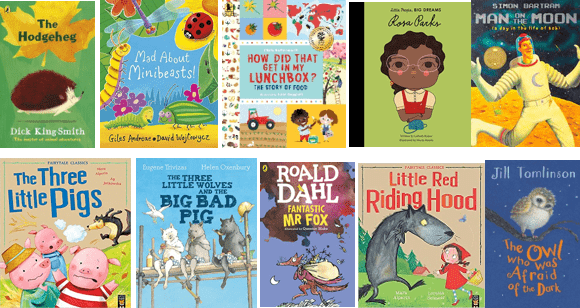Welcome to Year 2
Year 2 marks the last year of KS1, it is a very fun, exciting and busy year. We continue to build on the growing independence the children have fostered in Year 1. We work on developing key skills and learning behaviours which will allow the children to transition from Key Stage 1 to Key Stage 2.
Our New Cangle Curriculum:
Our New Cangle Curriculum is planned around termly foundation subject projects that link other areas of learning such as English, PE and Music.
Our main Autumn Term project is called ‘Movers and Shakers’ with 6 accompanying mini projects.
Our main Spring Term project is called ‘Magnificent Monarchs’ with 3 accompanying mini projects.
Our main Summer Term project is called ‘Coastline’ with 4 accompanying t mini projects.
Please have a look at our Y2 Curriculum Plan for more details about how we organise our curriculum.
English
In English we deliver a whole class book led curriculum and teach writing skills through various genres including; narrative writing (first and third person), retelling traditional tales, recount writing, non-chronological reports, instructional writing as well as a variety of poetry styles.
In Year 2, children are continuing to build their reading skills and reading continues to be a key area of focus throughout the year. This year children join AR (accelerated reader) and following a Star Reader Assessment, children are given a ZPD (a reading range) and are encouraged to choose a text at the lower end of their ZPD. They then move up their ZPD choosing books higher in their ZPD as they pass quizzes. If children are regularly scoring 100% on their quizzes they are be encouraged to choose a different genre/author or to choose a non-fiction text to encourage development and growth.
The reading we do in class focuses on a whole class text. The teacher models reading as an ‘expert’ and reads fluently with enhanced expression and intonation supporting children to ‘echo’ back. Listening to longer, more complex texts than they would be able to read alone increases children’s knowledge and understanding and, along with the rich vocabulary they encounter, develops their reading comprehension.
Books we read as a class over the year:
Suggested reading list:
https://schoolreadinglist.co.uk/reading-lists-for-ks1-school-pupils/suggested-reading-list-year-2-pupils-ks1-age-6-7/
The child’s knowledge of graphemes (written form of sounds) will be building this year and they will be using these to spell words. Homophones are taught in order for children to be aware that words can sound the same but have different spelling. Spelling of trickier contracted words (shortened forms) such as ‘we’ve’, ‘they’ll’, ’they’ve’ are taught with children learning how to use the possessive apostrophe. In Year 2 we learn how to add suffixes such as: –ness, -ful, -ment, -ly and –less to words and understand how adding these can change the meaning of a word completely.
Although formal phonics teaching is usually complete by the end of Year 1, children continue to build their knowledge within spelling and grammar sessions and apply this knowledge in their writing activities. We recap phase 5 (learned in Year 1) and teach phase 6.
Children will now be more confident in their formation of letters and this year they will learn to joining their handwriting.
Year 2 Common Exception words that the children should be able to read and spell by the end of the year:
Helpful information:
Noun: Name of a person, place or object. (Jane, London, table etc.)
Verb: An action or doing word. (Run, jumping, think etc.)
Adjective: words used to describe and give more information about a noun. (Sparkling, soft, green etc.)
Adverb: words used to describe a verb. (Carefully, quickly, sadly etc.)
Maths
In maths we believe it is good to make mistakes because we learn from them. We regularly use manipulatives and draw our problems as this helps us with difficult abstract concepts. The National Curriculum ‘mastery’ style of learning focuses on breadth of knowledge, and children will be encouraged to use their understanding of the new concepts to solve challenges which deepen their understanding.
Maths in Year 2 continues to have a strong focus on number work, building on the children’s basic understanding of place value, addition and subtraction. We also introduce multiplication, division and fractions work, as well as applying our number knowledge to learning about measurement. We build on children’s knowledge and understanding of geometry and introduce work on statistics.
In Year 2, children encounter times tables for the first time and we devote lots of learning time to being able to quickly recall the required 2, 5 and 10 times tables. This times tables knowledge is vitally important as it forms the foundation for a large majority of the work children will cover within maths in Year 2 and beyond. We use Times Tables Rockstars to aid the delivery and practise of our times tables learning.
Maths games:
https://www.topmarks.co.uk/maths-games/hit-the-button
https://play.ttrockstars.com/auth/school
Timetables songs:
2 x https://www.youtube.com/watch?v=BMX8O0aGB0Q













